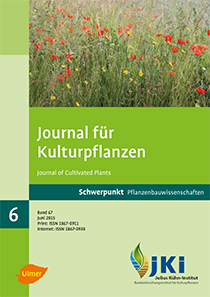Level normalized modeling approach of yield volatility for winter wheat and silage maize on different scales within Germany
Keywords:
Statistical crop yield models, climate impacts, winter wheat, silage maize, volatilityAbstract
Weather-related yield volatility is an important production risk for agriculture. Especially, negative yield anomalies could increase through climate change. We develop and investigate statistical crop yield models which can be used to predict crop yield impacts of weather and climate projections. The models are applied to winter wheat and silage maize, which are the most important annual crops as winter and spring crops, respectively, in Germany. The yields of both crops were modelled on county level, but evaluated on federal state, river basin or national level. We use three regression methods: separate time series model, panel data model, and random coefficient model. Within the Cobb-Douglas production function, relative changes (of yield and factor anomalies) are related to each other. To include the conditions of vegetative and generative plant development, we use climate variables summed to quarter- and half-year values. Furthermore, our models are controlled with proxy variables for economic impacts to estimate unbiased climatic parameters. Our study shows that the simple separate time series models explain (measured by the Nash-Sutcliffe model efficiency coefficient) yield anomalies best. They perform generally better (0.81) than the panel data models (0.72) due to a more accurate reproduction of exceptional yield changes at the county level. The random coefficient models performed between the separate time series models and panel data models (0.78). The aggregation of county yields to federal state and river basin yields improves the model accuracy by + 0.14. The aggregation effect is at highest for the panel data model on river basin scale (+0.26). The models for both crops achieve a similar goodness of fit. The spatial distribution of model parameters reflects the prevailing soil and climate characteristics within Germany relevant for the different plant development periods. Our statistical models capture collinear factors within yield formation. These are, for example, pests and diseases, or the adaptation behaviour of farmers on changing climatic or economic conditions. Due to the normalization, the yield changes are independent of technological levels and can be combined with weather and climate projection without any bias correction. The coarse temporal subdivision of the climatic variables supports robust assessments of climate change projections. To conclude, our models are suitable for the combination of yield assessments with weather and climate projections, because they reproduce yields from out-of-sample years robustly. In general, the separate time series models reproduce best the measured yield changes.
DOI: 10.5073/JfK.2015.06.01, https://doi.org/10.5073/JfK.2015.06.01








